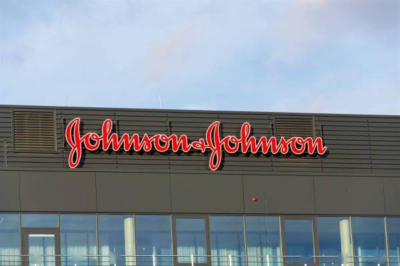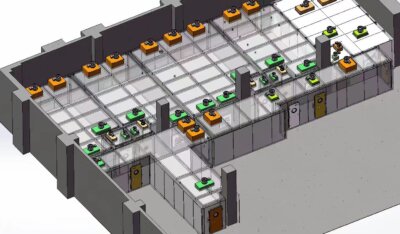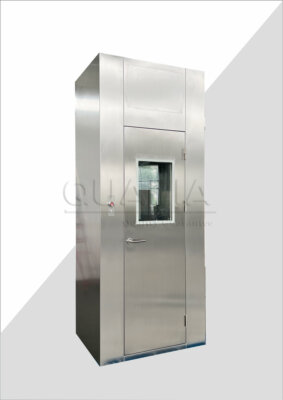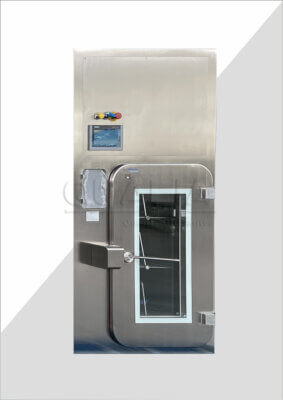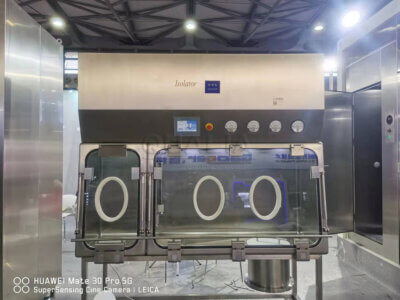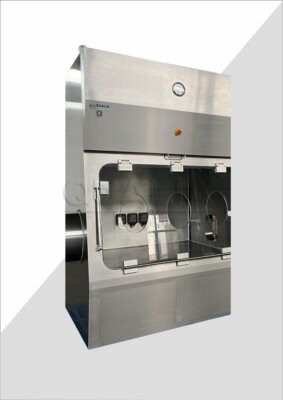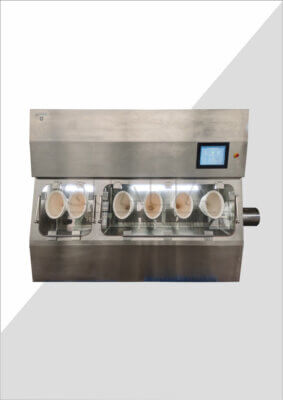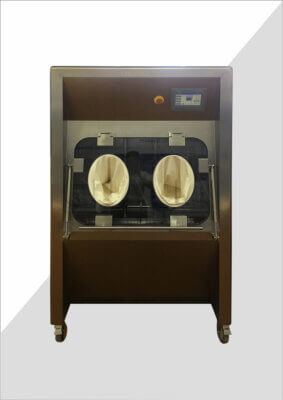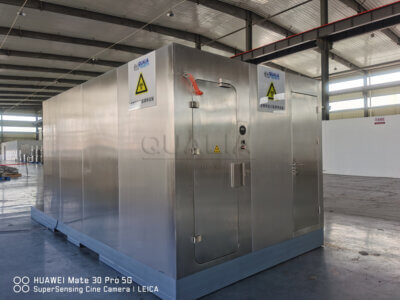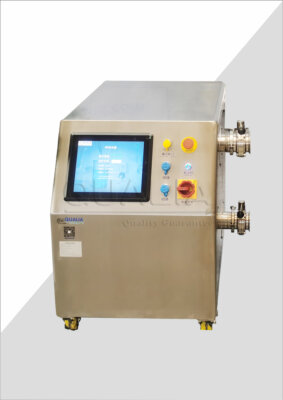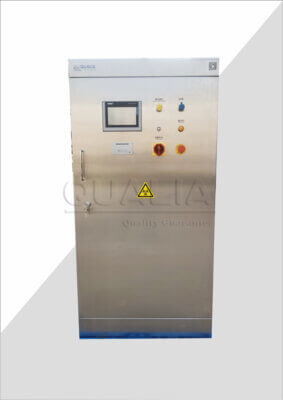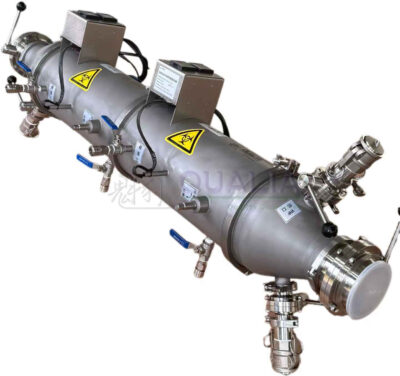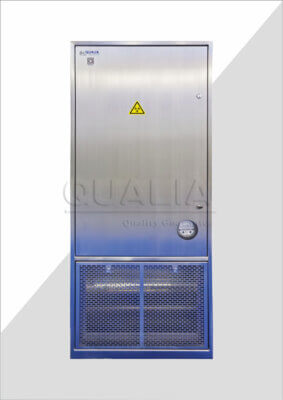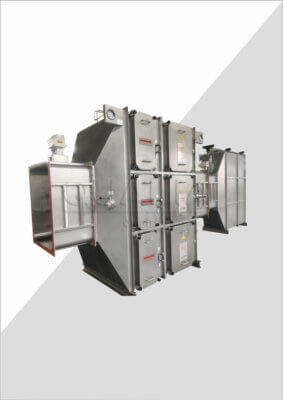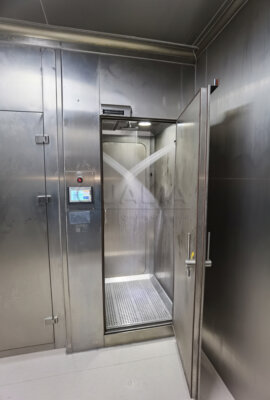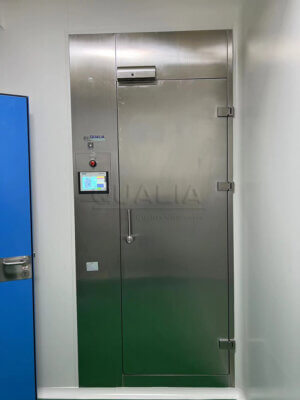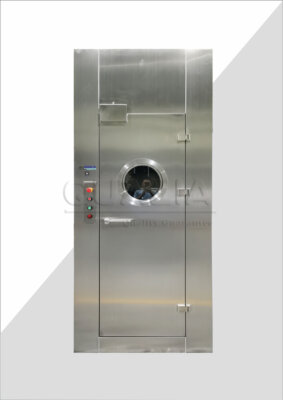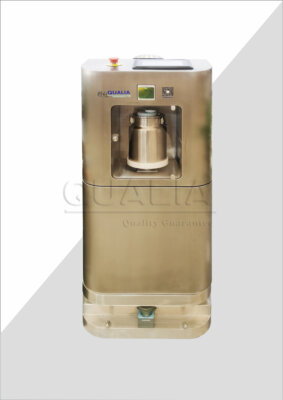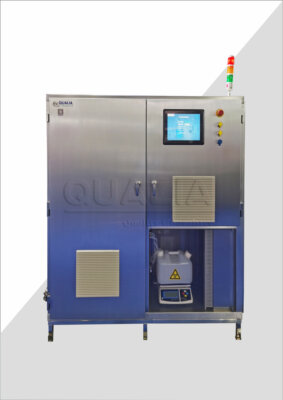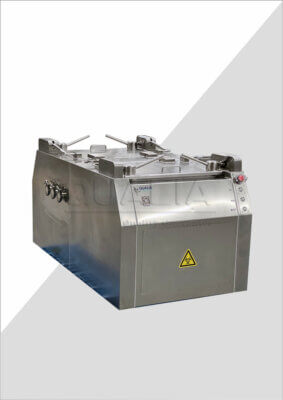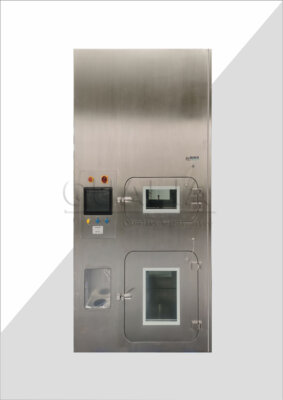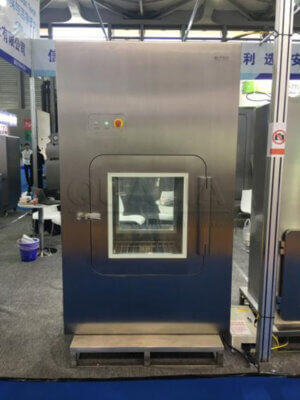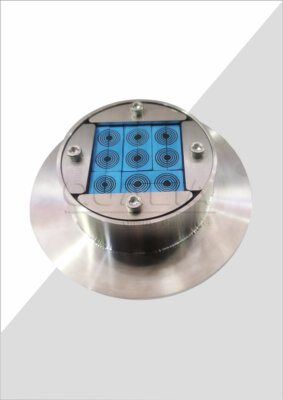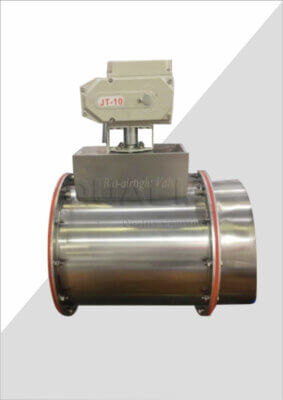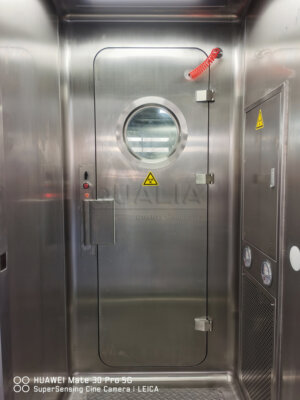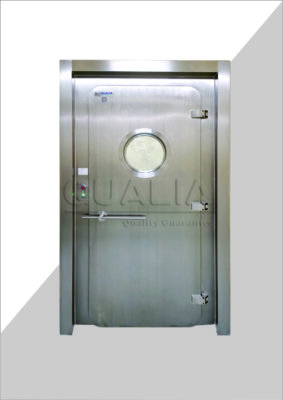Nanoparticle handling in high-containment environments has become a critical aspect of pharmaceutical and biotechnology research and manufacturing. As the potency and complexity of these microscopic materials increase, so does the need for advanced safety measures. OEB4 and OEB5 isolators represent the pinnacle of containment technology, designed to protect both operators and the environment from exposure to highly potent compounds. This article delves into the intricacies of nanoparticle handling within these sophisticated isolation systems, providing a comprehensive guide for professionals in the field.
The importance of proper nanoparticle handling cannot be overstated. These minuscule particles, often measuring less than 100 nanometers, possess unique properties that can make them both incredibly useful and potentially hazardous. OEB4 and OEB5 isolators are specifically engineered to manage substances with very low Occupational Exposure Limits (OELs), typically in the range of nanograms per cubic meter. This level of containment is essential for protecting personnel from the potential health risks associated with nanoparticle exposure, which can include respiratory issues, skin irritation, and even long-term systemic effects.
As we explore the world of nanoparticle handling in OEB4/OEB5 isolators, we'll uncover the latest technologies, best practices, and safety protocols that ensure the integrity of research and manufacturing processes. From the design features of these advanced isolators to the stringent operational procedures required for their use, this guide will provide valuable insights for laboratory managers, safety officers, and researchers working with highly potent compounds.
"Nanoparticle handling in OEB4/OEB5 isolators requires a multifaceted approach to safety, combining advanced engineering controls with rigorous operational protocols to minimize the risk of exposure to highly potent compounds."
What are the key design features of OEB4/OEB5 isolators for nanoparticle handling?
The foundation of safe nanoparticle handling lies in the design of OEB4/OEB5 isolators. These sophisticated containment systems are engineered with multiple layers of protection to ensure the highest level of safety for operators and the environment.
At the core of OEB4/OEB5 isolator design is the concept of negative pressure containment. This means that the air pressure inside the isolator is maintained at a lower level than the surrounding environment, preventing the escape of nanoparticles or other hazardous materials.
Advanced filtration systems are another crucial component of these isolators. High-Efficiency Particulate Air (HEPA) filters, often coupled with Ultra-Low Penetration Air (ULPA) filters, are employed to capture nanoparticles with exceptional efficiency. These filtration systems ensure that air exiting the isolator is free from contaminants, protecting both the immediate work environment and the broader facility.
"OEB4/OEB5 isolators incorporate redundant safety features, including multi-stage filtration and continuous pressure monitoring, to maintain a hermetic seal and prevent the release of nanoparticles into the surrounding environment."
The physical structure of OEB4/OEB5 isolators is designed for durability and ease of decontamination. Materials such as 316L stainless steel are commonly used due to their resistance to corrosion and compatibility with various cleaning agents. Smooth, crevice-free interiors facilitate thorough cleaning and prevent particle accumulation.
| Feature | Purpose | Benefit |
|---|---|---|
| Negative Pressure | Containment | Prevents escape of particles |
| HEPA/ULPA Filtration | Air Purification | Removes 99.9999% of particles |
| Stainless Steel Construction | Durability | Facilitates decontamination |
| Airlock Systems | Controlled Transfer | Maintains containment during material entry/exit |
In conclusion, the design features of OEB4/OEB5 isolators for nanoparticle handling are the result of meticulous engineering aimed at creating a secure environment for working with highly potent materials. These systems represent the cutting edge of containment technology, providing a foundation for safe and efficient nanoparticle research and manufacturing processes.
How do operational procedures ensure safe nanoparticle handling in isolators?
Operational procedures are the backbone of safe nanoparticle handling in OEB4/OEB5 isolators. These procedures encompass a range of practices that, when followed diligently, significantly reduce the risk of exposure and contamination.
The cornerstone of operational safety is proper training. All personnel working with nanoparticles in high-containment environments must undergo comprehensive training programs. These programs cover not only the specific handling techniques for nanoparticles but also the operation of the isolator systems, emergency procedures, and the use of personal protective equipment (PPE).
Standard Operating Procedures (SOPs) play a crucial role in maintaining consistency and safety. These documents outline step-by-step processes for tasks such as material transfer, equipment operation, and decontamination. SOPs are regularly reviewed and updated to incorporate new safety information and technological advancements.
"Adherence to rigorous operational procedures, including strict gowning protocols and meticulous documentation, is essential for maintaining the integrity of nanoparticle containment in OEB4/OEB5 isolators."
One of the most critical operational aspects is the proper use of airlocks and transfer ports. These systems allow for the safe introduction and removal of materials from the isolator without compromising containment. Operators must follow specific protocols for using these transfer systems, including appropriate packaging of materials and adherence to pressure equalization procedures.
| Procedure | Purpose | Frequency |
|---|---|---|
| Gowning | Prevent contamination | Before each entry |
| Air sampling | Monitor containment | Daily |
| Leak testing | Verify isolator integrity | Weekly |
| Full decontamination | Maintain sterility | Monthly or as needed |
In conclusion, operational procedures for nanoparticle handling in OEB4/OEB5 isolators are designed to create a culture of safety and precision. By combining thorough training, detailed SOPs, and regular monitoring, facilities can ensure that the advanced containment provided by these isolators is fully utilized, protecting both personnel and research integrity.
What role does environmental monitoring play in nanoparticle containment?
Environmental monitoring is a critical component of nanoparticle containment in OEB4/OEB5 isolators. It serves as an early warning system, providing real-time data on the performance of containment systems and alerting operators to potential breaches before they become significant hazards.
The primary focus of environmental monitoring in nanoparticle handling is particle detection. Advanced particle counters are integrated into the isolator systems to continuously measure the concentration of particles in the air. These devices can detect particles as small as a few nanometers, ensuring that even the tiniest nanoparticles are accounted for.
Pressure differential monitoring is another crucial aspect of environmental control. Sensors continuously track the pressure inside the isolator relative to the surrounding environment, ensuring that negative pressure is maintained at all times. Any fluctuations in pressure can trigger immediate alerts, allowing for swift corrective action.
"Continuous environmental monitoring, including real-time particle detection and pressure differential tracking, is essential for maintaining the integrity of nanoparticle containment in OEB4/OEB5 isolators and ensuring operator safety."
Air quality assessment goes beyond particle counting. Regular testing for specific compounds or elements related to the nanoparticles being handled provides additional assurance of containment effectiveness. This may involve techniques such as mass spectrometry or electron microscopy to analyze air samples for trace amounts of target materials.
| Monitoring Type | Measurement | Threshold |
|---|---|---|
| Particle Count | Particles/m³ | <1 particle/m³ at 0.5µm |
| Pressure Differential | Pascals | -30 to -50 Pa |
| Air Changes | Per hour | >20 ACH |
| Surface Sampling | ng/cm² | Material-specific limits |
In conclusion, environmental monitoring plays a pivotal role in ensuring the safety and efficacy of nanoparticle handling in OEB4/OEB5 isolators. By providing continuous, detailed data on containment conditions, these monitoring systems enable proactive management of potential risks and help maintain the highest standards of safety in nanoparticle research and manufacturing environments.
How are decontamination and waste management handled in nanoparticle isolators?
Decontamination and waste management are critical processes in maintaining the safety and integrity of nanoparticle handling operations within OEB4/OEB5 isolators. These procedures ensure that the isolator environment remains sterile and that any hazardous materials are disposed of safely without risk to personnel or the environment.
Decontamination of OEB4/OEB5 isolators involves a multi-step process designed to eliminate all traces of nanoparticles and other contaminants. This typically begins with a physical cleaning using specialized detergents and tools designed to capture nanoparticles without dispersing them. Following this, a chemical decontamination phase may be employed, using agents specifically chosen for their effectiveness against the types of nanoparticles being handled.
Vaporized hydrogen peroxide (VHP) decontamination is a common method used in high-containment environments. This process involves introducing hydrogen peroxide vapor into the sealed isolator, effectively sterilizing all surfaces and eliminating any remaining nanoparticles. The effectiveness of VHP decontamination is validated through the use of biological and chemical indicators.
"Effective decontamination of OEB4/OEB5 isolators requires a combination of physical cleaning, chemical treatment, and validated sterilization processes to ensure complete elimination of nanoparticle residues and maintain a sterile environment for subsequent operations."
Waste management in nanoparticle handling facilities presents unique challenges due to the potential hazards associated with these materials. All waste generated within the isolator, including used PPE, filters, and process materials, must be treated as potentially contaminated and handled accordingly.
| Waste Type | Treatment Method | Disposal Route |
|---|---|---|
| Solid Waste | Autoclaving | Incineration |
| Liquid Waste | Chemical Treatment | Specialized Facility |
| HEPA Filters | Encapsulation | Hazardous Waste Landfill |
| PPE | Double Bagging | Incineration |
Specialized waste containers designed to prevent nanoparticle release are used within the isolator. These containers are typically equipped with HEPA filters to allow for pressure equalization without particle escape. When removed from the isolator, these containers are sealed and transferred to appropriate treatment facilities.
In conclusion, decontamination and waste management in nanoparticle isolators are complex processes that require meticulous planning and execution. By implementing comprehensive decontamination protocols and stringent waste handling procedures, facilities can ensure the continued safety of their operations and minimize the environmental impact of nanoparticle research and manufacturing.
What personal protective equipment is required for working with nanoparticles in isolators?
Personal Protective Equipment (PPE) plays a crucial role in ensuring the safety of operators working with nanoparticles in OEB4/OEB5 isolators. While the isolator itself provides the primary containment, proper PPE serves as an additional layer of protection against potential exposure during routine operations or in the event of a containment breach.
The selection of PPE for nanoparticle handling is based on a thorough risk assessment that considers the specific properties of the nanoparticles being handled, the tasks being performed, and the potential routes of exposure. Generally, a comprehensive PPE ensemble for working with nanoparticles in high-containment isolators includes several key components.
Respirators are a critical element of PPE for nanoparticle handling. High-efficiency particulate air (HEPA) filtered respirators or powered air-purifying respirators (PAPRs) are commonly used to protect against inhalation of nanoparticles. These respirators must be properly fitted and maintained to ensure their effectiveness.
"The use of specialized PPE, including impermeable suits and multi-layered glove systems, is essential for protecting operators from potential nanoparticle exposure when working with OEB4/OEB5 isolators, even though these systems provide high levels of primary containment."
Full-body protective suits made from impermeable materials are typically required. These suits are designed to prevent skin contact with nanoparticles and are often disposable to minimize the risk of contamination spread. The suits are sealed at the wrists and ankles and may include integrated boots or foot coverings.
| PPE Component | Specification | Purpose |
|---|---|---|
| Respirator | HEPA filtered or PAPR | Prevent inhalation |
| Protective Suit | Impermeable, disposable | Prevent skin contact |
| Gloves | Multi-layered, chemical-resistant | Hand protection |
| Goggles | Sealed, anti-fog | Eye protection |
| Boots | Chemical-resistant, disposable covers | Foot protection |
Gloves are particularly important in isolator work. A multi-glove system is often employed, with a sturdy outer glove attached to the isolator itself and one or more layers of disposable gloves worn by the operator. This system allows for glove changes without compromising containment.
In conclusion, while OEB4/OEB5 isolators provide a high level of containment, appropriate PPE remains an essential component of safe nanoparticle handling. The careful selection and proper use of PPE, combined with rigorous training and adherence to safety protocols, ensure that operators are protected from potential exposure to these potent materials.
How do emergency response procedures differ for nanoparticle isolators?
Emergency response procedures for nanoparticle handling in OEB4/OEB5 isolators are highly specialized and differ significantly from those in standard laboratory settings. The potential risks associated with nanoparticle exposure necessitate a rapid, coordinated, and containment-focused approach to emergencies.
One of the primary differences in emergency response for nanoparticle isolators is the emphasis on maintaining containment even during crisis situations. Unlike standard emergency protocols that might prioritize immediate evacuation, procedures for nanoparticle isolators often focus on securing the containment system first to prevent widespread contamination.
Emergency shutdown procedures for OEB4/OEB5 isolators are designed to quickly and safely halt all operations while maintaining negative pressure and filtration. These systems often include emergency power supplies to ensure that critical containment features remain operational even during power failures.
"Emergency response procedures for nanoparticle isolators prioritize containment integrity and involve specialized decontamination protocols to minimize the risk of nanoparticle exposure during and after incident management."
Spill response in nanoparticle isolators requires specialized equipment and techniques. Traditional spill kits are often inadequate for nanoparticles due to their unique properties. Instead, facilities use nanoparticle-specific spill kits that may include electrostatic precipitators or specialized absorbents designed to capture and contain nanoscale materials.
| Emergency Type | Primary Response | Secondary Action |
|---|---|---|
| Containment Breach | Activate emergency sealing | Initiate decontamination |
| Fire | Use inert gas suppression | Seal isolator |
| Power Failure | Engage backup systems | Suspend operations |
| Operator Injury | Secure isolator | Assist via airlock |
Training for emergency scenarios is more intensive for personnel working with nanoparticle isolators. This includes simulations of various emergency scenarios and regular drills to ensure that all staff members are prepared to respond quickly and effectively to potential incidents.
In conclusion, emergency response procedures for nanoparticle isolators are tailored to address the unique challenges posed by these advanced containment systems and the materials they contain. By focusing on maintaining containment, utilizing specialized equipment, and providing comprehensive training, facilities can effectively manage emergencies while minimizing the risk of nanoparticle exposure.
What future developments are expected in nanoparticle handling technology?
The field of nanoparticle handling technology is rapidly evolving, with ongoing research and development aimed at enhancing safety, efficiency, and versatility in high-containment environments. As we look to the future, several key trends and innovations are expected to shape the landscape of nanoparticle handling in OEB4/OEB5 isolators.
One of the most promising areas of development is in advanced automation and robotics. Future isolator systems are likely to incorporate more sophisticated robotic systems capable of performing complex manipulations with nanoparticles, reducing the need for direct human intervention and minimizing the risk of operator exposure.
Artificial Intelligence (AI) and machine learning algorithms are expected to play an increasingly important role in nanoparticle handling. These technologies can be applied to optimize process parameters, predict maintenance needs, and even detect potential containment breaches before they occur.
"The integration of AI-driven predictive maintenance and real-time risk assessment systems in OEB4/OEB5 isolators represents a significant advancement in nanoparticle handling technology, potentially revolutionizing safety protocols and operational efficiency."
Advancements in materials science are likely to lead to the development of new, more effective filtration and containment materials. Nanomaterials themselves may be utilized to create more efficient HEPA filters or to develop "smart" surfaces that can actively capture and neutralize escaped nanoparticles.
| Technology | Current Status | Future Potential |
|---|---|---|
| Robotics | Basic manipulation | Complex synthesis tasks |
| AI Integration | Monitoring systems | Predictive risk management |
| Nanomaterial Filters | HEPA/ULPA | Self-cleaning, adaptive filtration |
| VR/AR | Training simulations | Real-time operational guidance |
Virtual and Augmented Reality (VR/AR) technologies are expected to enhance training and operational support for nanoparticle handling. These tools can provide immersive training experiences and offer real-time guidance to operators working with complex isolator systems.
In conclusion, the future of nanoparticle handling technology in OEB4/OEB5 isolators is poised for significant advancements. From AI-driven systems to novel materials and immersive technologies, these developments promise to further enhance safety, efficiency, and capabilities in nanoparticle research and manufacturing. As these technologies mature, we can expect to see a new generation of isolator systems that offer unprecedented levels of containment and control.
Conclusion
Nanoparticle handling in OEB4/OEB5 isolators represents the cutting edge of containment technology in the pharmaceutical and biotechnology industries. As we've explored throughout this article, the safe and effective management of these potent materials requires a multifaceted approach that combines advanced engineering, rigorous operational procedures, and ongoing vigilance.
The sophisticated design features of OEB4/OEB5 isolators, including negative pressure environments, multi-stage filtration systems, and robust construction materials, provide the foundation for safe nanoparticle handling. However, it is the implementation of comprehensive operational procedures, including proper training, meticulous documentation, and adherence to strict protocols, that truly ensures the integrity of these containment systems.
Environmental monitoring plays a crucial role in maintaining safety, offering real-time insights into the performance of containment systems and allowing for rapid response to any potential issues. The specialized approaches to decontamination and waste management further underscore the unique challenges posed by nanoparticle handling and the innovative solutions developed to address them.
Personal protective equipment, while secondary to the primary containment provided by the isolators, remains an essential component of operator safety. The careful selection and proper use of PPE provide an additional layer of protection against potential exposure.
As we look to the future, the field of nanoparticle handling is poised for significant advancements. The integration of AI, robotics, and novel materials promises to further enhance safety and efficiency in high-containment environments.
QUALIA stands at the forefront of these developments, offering cutting-edge solutions for nanoparticle handling in OEB4/OEB5 isolators. By combining state-of-the-art technology with a deep understanding of the unique challenges posed by nanoparticle handling, QUALIA is helping to shape the future of safe and effective research and manufacturing in this critical field.
In conclusion, the safe handling of nanoparticles in OEB4/OEB5 isolators is a complex and evolving discipline that requires ongoing dedication to safety, innovation, and best practices. As the importance of nanoparticle research and manufacturing continues to grow, the technologies and procedures discussed in this article will play an increasingly vital role in advancing scientific knowledge while protecting the health and safety of researchers and the environment.
External Resources
OEB 4/5 High Containment Sampling Isolator Series – Senieer – This resource details the features and technical parameters of high containment isolators designed for handling toxic materials, including nanoparticles, at OEB 4 and OEB 5 levels. It highlights the safety measures, automated systems, and containment technologies used.
OEL / OEB – Esco Pharma – This article explains the Occupational Exposure Band (OEB) system and how it categorizes chemicals based on their potency and health risks. It provides guidelines on the appropriate containment technologies, including isolators, for handling substances at different OEB levels.
Pharma OEB Best Practice – 3M – This document offers best practices for containment control strategies in pharmaceutical settings, including handling nanoparticles. It suggests the use of isolators and other containment technologies for activities involving highly potent compounds classified under OEB 4 and OEB 5.
Biosafety OEB4/OEB5 Isolators: Complete Protection Guide – QUALIA – This guide focuses on the maintenance, performance, and safety aspects of OEB4/OEB5 isolators. It provides insights into ensuring the integrity and compliance of these systems when handling nanoparticles and other highly potent materials.
Revolutionizing Pharmaceutical Safety: The Future of OEB4/OEB5 Isolators – QUALIA – This article discusses the future of OEB4/OEB5 isolator technology, emphasizing advancements in automation, smart monitoring systems, and flexible containment. It is relevant for understanding the evolving landscape of nanoparticle handling in high-containment environments.
High Containment Isolators for Nanoparticle Handling – ILC Dover – Although not directly linked here, ILC Dover is known for its high-containment solutions. Their isolators are designed to handle highly potent materials, including nanoparticles, ensuring operator safety and preventing cross-contamination.
Containment Solutions for Highly Potent APIs and Nanoparticles – MBRAUN – MBRAUN offers containment solutions that include isolators and gloveboxes specifically designed for handling highly potent APIs and nanoparticles. Their systems ensure high levels of containment and operator safety.
Isolator Technology for Safe Handling of Nanoparticles – Comecer – Comecer specializes in isolator technology for various applications, including the safe handling of nanoparticles. Their isolators are designed to meet the stringent requirements of OEB 4 and OEB 5 containment levels.
Related Contents:
- OEB4/OEB5 Isolators for Pharma Powder Handling
- The Future of Containment: OEB4 vs OEB5 Isolators
- OEB4/OEB5 Glove Box Isolators: Handling Potent Compounds
- Airflow Management in OEB4/OEB5 Isolators: Best Practices
- Biosafety OEB4/OEB5 Isolators: Complete Protection Guide
- Portable OEB4/OEB5 Isolators: Mobility Meets Safety
- API Manufacturing in OEB4/OEB5 Isolators: Best Practices
- OEB4/OEB5 Isolators: Top High Containment Systems
- Safeguarding Potent Compounds: Choosing the Right OEB4/OEB5 Isolator

